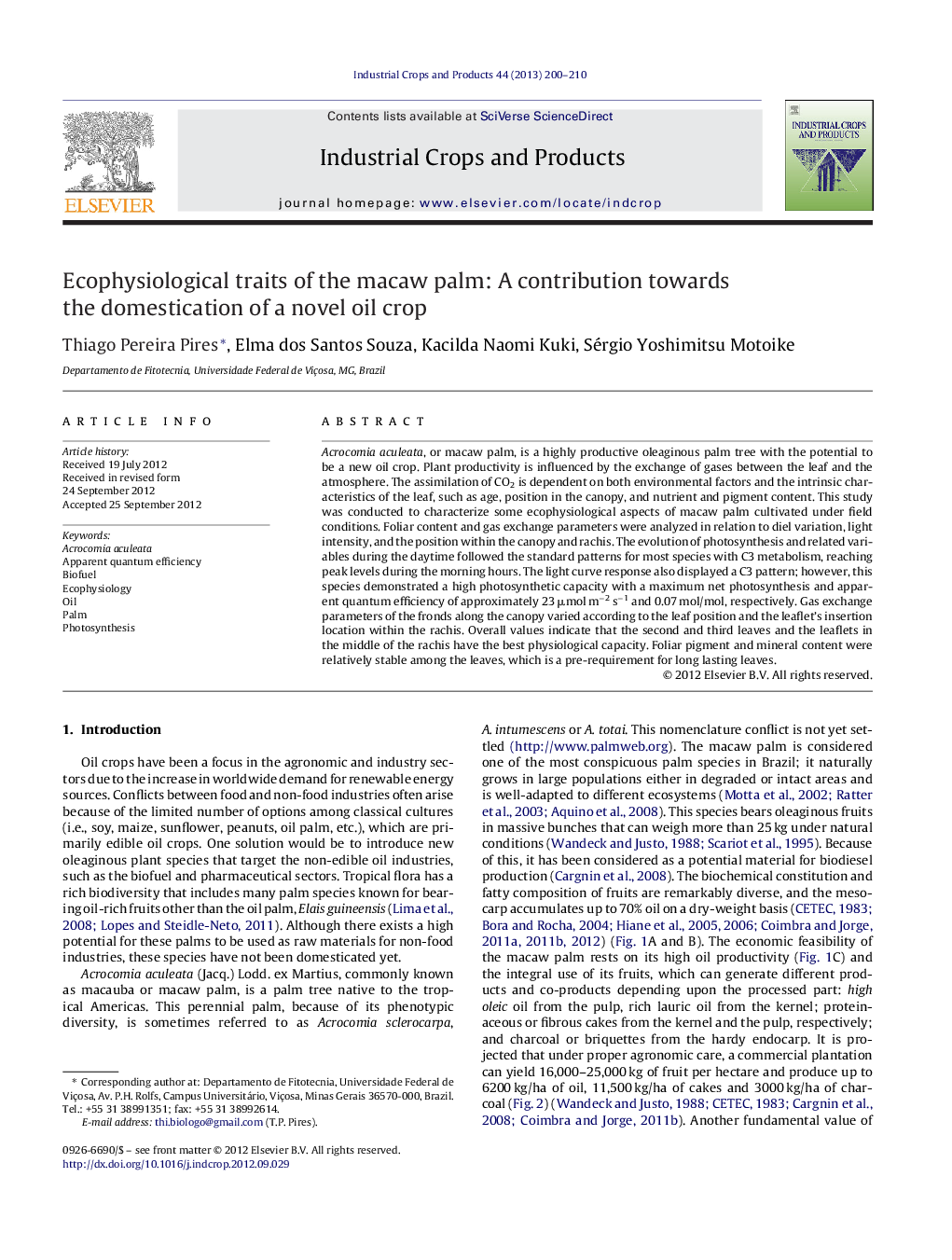| کد مقاله | کد نشریه | سال انتشار | مقاله انگلیسی | نسخه تمام متن |
|---|---|---|---|---|
| 4513632 | 1624865 | 2013 | 11 صفحه PDF | دانلود رایگان |

Acrocomia aculeata, or macaw palm, is a highly productive oleaginous palm tree with the potential to be a new oil crop. Plant productivity is influenced by the exchange of gases between the leaf and the atmosphere. The assimilation of CO2 is dependent on both environmental factors and the intrinsic characteristics of the leaf, such as age, position in the canopy, and nutrient and pigment content. This study was conducted to characterize some ecophysiological aspects of macaw palm cultivated under field conditions. Foliar content and gas exchange parameters were analyzed in relation to diel variation, light intensity, and the position within the canopy and rachis. The evolution of photosynthesis and related variables during the daytime followed the standard patterns for most species with C3 metabolism, reaching peak levels during the morning hours. The light curve response also displayed a C3 pattern; however, this species demonstrated a high photosynthetic capacity with a maximum net photosynthesis and apparent quantum efficiency of approximately 23 μmol m−2 s−1 and 0.07 mol/mol, respectively. Gas exchange parameters of the fronds along the canopy varied according to the leaf position and the leaflet's insertion location within the rachis. Overall values indicate that the second and third leaves and the leaflets in the middle of the rachis have the best physiological capacity. Foliar pigment and mineral content were relatively stable among the leaves, which is a pre-requirement for long lasting leaves.
► Overall gas exchange characteristics of macaw palm is presented.
► Macaw palm exhibits a C3 pattern of photosynthesis with a high quantum yield.
► Foliar physiological profiles create a mosaic along the canopy of macaw palm.
► Foliar pigment and mineral content were relatively stable along the canopy.
Journal: Industrial Crops and Products - Volume 44, January 2013, Pages 200–210